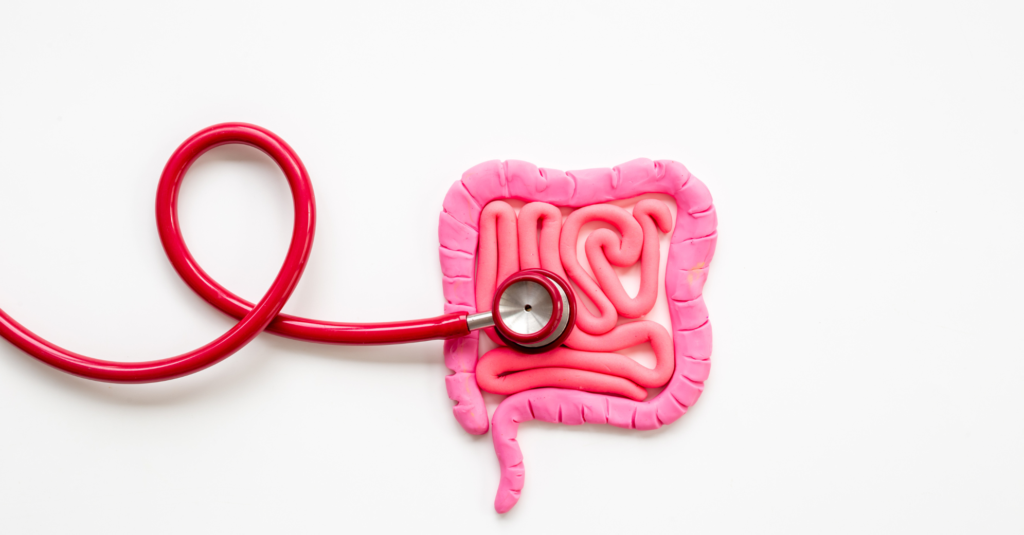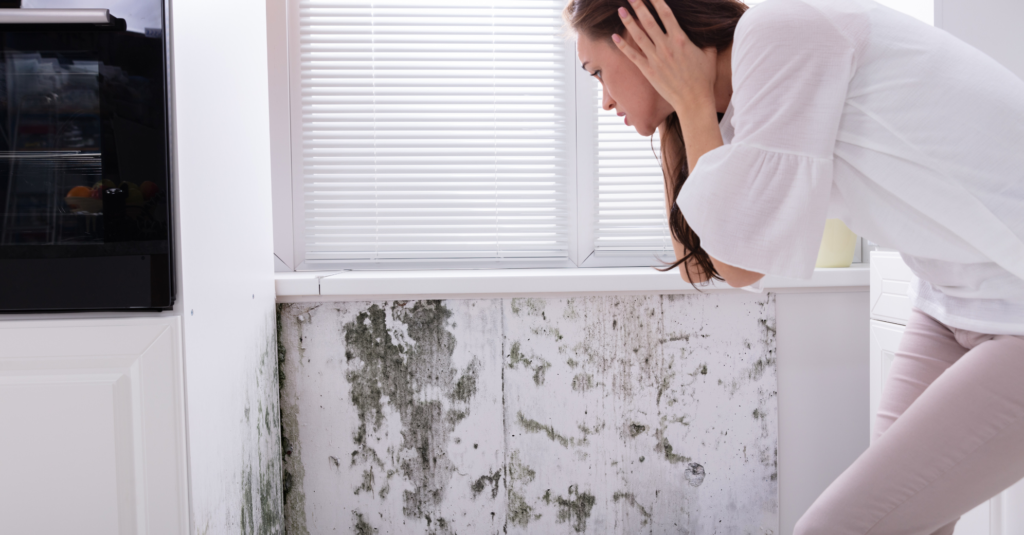Mold is everywhere. It’s present both indoors and outdoors, and it thrives in damp, warm, and humid environments. Outdoors, mold grows on soil, decaying plants, and wood. Indoors, you’ll find it in areas with moisture issues, like bathrooms, basements, kitchens, and areas affected by water damage
In most cases, mold exposure doesn’t cause health issues for humans and animals. We’ve evolved along with molds, and many of them make their homes within our bodies, providing valuable benefits. However, some forms of mold exposure can be very dangerous, particularly exposure to toxins produced by fungi, called mycotoxins.
What Happens When You’re Exposed to Mold?
When you’re exposed to mold, the immune system reacts to mycotoxins, leading to inflammation and potential long-term health consequences. Mold exposure occurs through airborne spores, contaminated food, and water-damaged buildings. Mycotoxins enter the body via inhalation, ingestion, or skin contact, triggering systemic effects. Of course, those effects depend on the mycotoxin in question, as well as how it enters the body.
People can be exposed to mold through:
- Inhalation: Breathing in airborne mold spores, especially in damp environments. This allows mycotoxins to settle in the lung tissues, as well as to spread to other areas of the body. Allergic reactions, asthma, and pneumonia are common systemic effects.
- Ingestion: Consuming contaminated food or beverages containing mold or mycotoxins allows these substances to enter the digestive system. They can spread to fatty tissue, wreak havoc on your gut biome, and more.
- Skin Contact: Touching moldy surfaces may cause irritation or allergic reactions if you’re sensitive to mold. Note that not everyone has these sensitivities, so it’s possible for one person to contact a surface and experience no effects and for someone else to have a serious allergic reaction.
Prolonged exposure can lead to respiratory issues, allergic reactions, and other health problems, especially for those with mold sensitivities or compromised immune systems. One impact that’s often overlooked is how mold affects your gut health.
How Does Mold Affect the Gut Microbiome?
Mold exposure disrupts your gut’s microbial balance, leading to dysbiosis, increased intestinal permeability, and immune dysfunction. An imbalanced microbiome weakens the body’s ability to detoxify mycotoxins efficiently because the gut microbiome regulates digestion, immunity, and overall health.
Can Mold Exposure Lead to Leaky Gut?
Mycotoxins damage gut lining cells, triggering inflammation and worsening intestinal permeability. Leaky gut occurs when the intestinal lining becomes more permeable, allowing toxins and undigested food particles to enter the bloodstream. Chronic exposure can lead to autoimmune responses and gastrointestinal distress.
What Symptoms Indicate Mold-Related Gut Issues?
Mold-related gut issues run the gamut from digestive issues to immune system dysfunction, neurological issues, skin reactions, and even yeast infections. Here’s a closer look at what each of those can mean for your body:
- Digestive problems: Bloating, diarrhea, constipation, nausea
- Immune dysfunction: Frequent infections, food sensitivities
- Neurological issues: Brain fog, headaches, difficulty concentrating
- Skin reactions: Eczema, rashes, itching
- Candida overgrowth: Sugar cravings, white-coated tongue, fatigue
Of course, these are just some of the most common symptoms. Other ways that mold affects the gut include:
- Disrupts Enzyme Production – Mycotoxins can impair digestive enzyme function, and that can mean poor nutrient absorption and digestive discomfort. Digestive discomfort and poor nutrition are two common early signs of mycotoxin exposure.
- Reduces Stomach Acid Levels – Mold exposure may force your body to produce less stomach acid, and that makes it harder to break down food, increasing your susceptibility to infections like H. pylori.
- Encourages Biofilm Formation – Mold-related dysbiosis can increase the production of biofilm in the gut, which creates a protective film around harmful microbes, making infections harder to treat.
- Increases Histamine Sensitivity – Mold can trigger mast cell activation, leading to higher histamine levels that mean dealing with bloating, acid reflux, and food sensitivities.
- Interferes with Bile Flow – Mycotoxins disrupt bile production and secretion, reducing your body’s ability to break down fats and eliminate toxins effectively. That compounds the problem because even more mycotoxins get recirculated into your body.
- Alters Gut Motility – Some mycotoxins slow gut transit time (the amount of time it takes material to pass through), and that can mean constipation. Other mycotoxins speed it up, leading to diarrhea and nutrient malabsorption.
- Weakens Gut-Immune Crosstalk – Your gut is home to a large portion of the immune system. Mold exposure impairs this connection, making autoimmune reactions more common and decreasing your overall defense against invaders.
- Lowers Secretory IgA (sIgA) Levels – sIgA is the first line of defense in the gut; mold toxins can deplete it, reducing the body’s ability to protect against pathogens and maintain a healthy microbiome.
- Induces Gut-Derived Inflammation – Chronic mold exposure may activate pro-inflammatory cytokines in the gut. That contributes to systemic inflammation and boosts your risk of chronic diseases.
- Affects Neurotransmitter Production – The gut produces neurotransmitters like serotonin and GABA, but mold-related dysbiosis can disrupt this balance, leading to mood disorders and cognitive issues.
- Increases Sensitivity to Oxalates – Mold exposure may impair oxalate metabolism, leading to symptoms like joint pain, kidney stones, and digestive discomfort.
- Triggers Food Intolerances – Mold-induced gut dysfunction can lead to increased sensitivity to gluten, dairy, and other common allergens due to compromised digestive function.
- Encourages Parasitic Overgrowth – A weakened gut microbiome from mold exposure creates an environment where parasites and pathogenic bacteria can thrive, further disrupting digestion and immune balance. We talked about candida overgrowth already, but many other bacteria, fungi, and parasites find this kind of environment hospitable.
With a better understanding of how mold exposure affects gut health, let’s turn our attention to recovery.
How Can You Restore Gut Health After Mold Exposure?
First, restoring gut health is possible. Second, it requires a customized approach and a deep understanding of detoxification strategies and the use of binders.
Detoxification Strategies:
- Increase hydration to flush out toxins.
- Support liver detox with cruciferous vegetables and milk thistle.
- Use binders to capture mycotoxins.
Microbiome Repair:
- Take probiotics to restore microbial balance (Lactobacillus plantarum, Saccharomyces boulardii, Bacillus subtilis).
- Consume prebiotics (onions, garlic, asparagus) to support beneficial bacteria.
- Follow an anti-inflammatory diet, avoiding sugar, gluten, and processed foods.
What Naturopathic Treatments Help with Mold Detox and Gut Healing?
Naturopathic treatments focus on restoring gut integrity and reducing mycotoxin load and include specific herbs with antimicrobial properties, supplements to repair gut health, functional medical testing, and dietary modifications in combinations unique to each individual. Approaches include:
- Herbal antimicrobials: Oregano oil, berberine, and grapefruit seed extract help reduce fungal and bacterial overgrowth associated with mold exposure.
- Gut repair supplements: L-glutamine, collagen, and zinc carnosine strengthen the intestinal lining, reducing inflammation and supporting tissue regeneration.
- Functional medicine testing: Identifies specific mycotoxins, gut imbalances, and nutritional deficiencies to tailor treatment effectively.
- Mitochondrial support: CoQ10, acetyl-L-carnitine, and PQQ enhance cellular energy production, which mold exposure can deplete.
- Bile flow support: Dandelion root, taurine, and phosphatidylcholine improve bile secretion, aiding in mycotoxin elimination.
- Adrenal and immune system support: Adaptogenic herbs like ashwagandha and rhodiola help balance the stress response and strengthen immune function.
- Anti-inflammatory therapy: Curcumin, quercetin, and omega-3 fatty acids reduce systemic inflammation caused by mold exposure.
- Dr. Sue’s protocols: Combining detox strategies, microbiome support, and personalized dietary modifications for comprehensive healing, focusing on long-term gut resilience and immune restoration.
Note that while herbs and supplements may be available over the counter, successful naturopathic remedies require a deep understanding of both the human body and how these treatments interact with the gut and other systems.
When Should You See a Naturopathic Doctor for Mold-Related Gut Issues?
See a naturopathic doctor if your symptoms don’t change with moderate dietary changes and regular detox efforts. Naturally Sue provides:
- Comprehensive mold testing (Mycotoxin Urine Test, GI Map, Organic Acids Test) to identify the mycotoxin(s) at the root of the problem.
- Individualized functional medicine treatments tailored to detoxification and gut restoration that go beyond one-size-fits-all applications.
- Guidance on long-term gut health maintenance to prevent the problem from returning, including identifying sources of mycotoxins in your environment.

Take Control of Your Gut Health Today
Mold exposure disrupts gut health and can dramatically affect your overall level of wellness, but recovery is possible with detoxification, microbiome repair, and naturopathic treatments. Dr. Sue specializes in personalized mold detox and gut healing.
Struggling with mold-related gut issues? Dr. Sparks can help. Book a consultation today!










